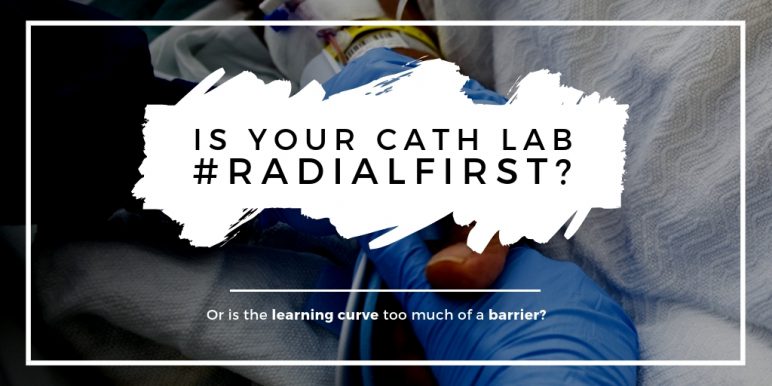A popular hashtag among cardiologists on Twitter, #RadialFirst hopes to promote the adoption of transradial access for cardiac catheterization and percutaneous coronary intervention (PCI) in cath labs across the world thanks to a deepening evidence base of positive outcomes.
The evidence shows that transradial access is associated with reductions in bleeding, vascular complications, and time to ambulation compared with a femoral approach. However, while the adoption of the transradial approach is increasing in the United States, the approach is not as widely used as it is in Europe, Canada and Asia—perhaps due to the challenges in the approach's learning curve.
So, what is the current state of the transradial approach in the United States? That is the question a new comprehensive literature review from the Duke Clinical Research Institute, published in Cardiovascular Innovations and Applications, set out to answer.
"The current state of evidence supports radial access as the preferred approach for PCI, as it can decrease bleeding and vascular complications, can reduce the time to mobility after cardiac catheterization, and is generally preferred by patients who have undergone both approaches during prior procedures," summarize authors Jennifer A. Rymer, MD, MBA and Sunil V. Rao, MD. "Importantly, the radial approach has been shown to reduce death in high-risk patients such as those with ACS and, in particular, STEMI undergoing primary PCI."
But what are the barriers to transradial access adoption?
One barrier to transradial access adoption is concerns over the learning curve, argue Rymer and Rao. "This has directly affected the uptake of radial access for primary PCI, where the data show the biggest advantage of the radial approach," write the authors. "Concerns over prolonged door-to-balloon (DTB) time and the potential need for crossover to femoral access are related to proficiency with the radial approach, which can be achieved once the learning curve has been overcome."
After looking at the evidence—several studies through which Rymer and Rao were able to quantify the transradial access learning curve—the authors were confident in the "relative safety of the [transradial intervention] learning curve for patients." The authors do stress, however, the need for mentorship and experience with transradial diagnostic catheterizations before transradial PCI is performed, but maintain that the learning curve is "relatively shallow."
Another barrier to adoption the authors identify is the risk-treatment paradox, which describes how high-risk patients often receive less intensive treatment. "Although radial access is associated with less major bleeding and improved short-term death outcomes, it is clearly not used more in patients with higher bleeding risks," say the authors.
Making radial access the default overcomes this paradox—hence the popularity of the #RadialFirst hashtag on Twitter. "The best outcomes from TRI are achieved by operators who are proficient with the radial approach and use it as the default access in all patients, thereby avoiding the risk-treatment paradox," say the authors.

Has your lab made the switch to transradial access?
With a weight of evidence on the side of transradial access, as opposed to femoral access, and a relatively shallow learning curve, has your lab made the switch to using transradial access as the default approach? What barriers do you see to radial access? Is volume an issue? Is there a learning curve for the whole team? Leave a comment!

We have been radial first for many years now at Heart Hospital of New Mexico, in fact we are one of the training sites. We do probably 95 to 98 percent of our procedures radial. First, the interventionists had to be on board with it and next the staff. There was a short span of several months for the interventionists to be comfortable and efficient with radial access and engaging coronaries with this approach. Also, the staff had to be on board with the radial prep and we always have groin prep as a back up. There was definitely a learning curve, but not too long. Overall, it is a better less complications and easier on the patients.
it is clearly not used more in patients with higher bleeding risks